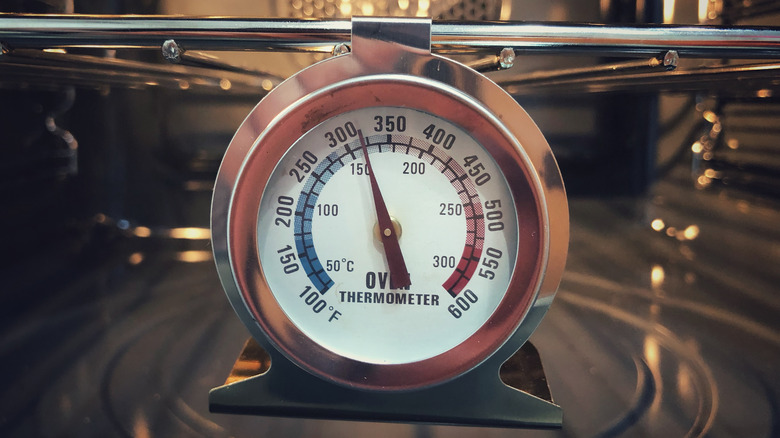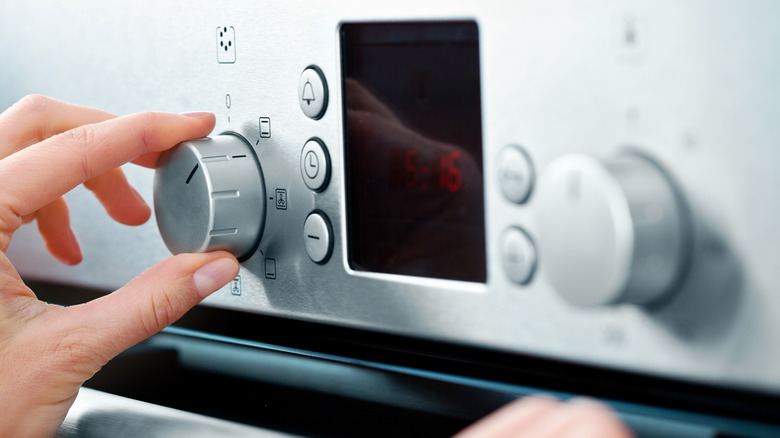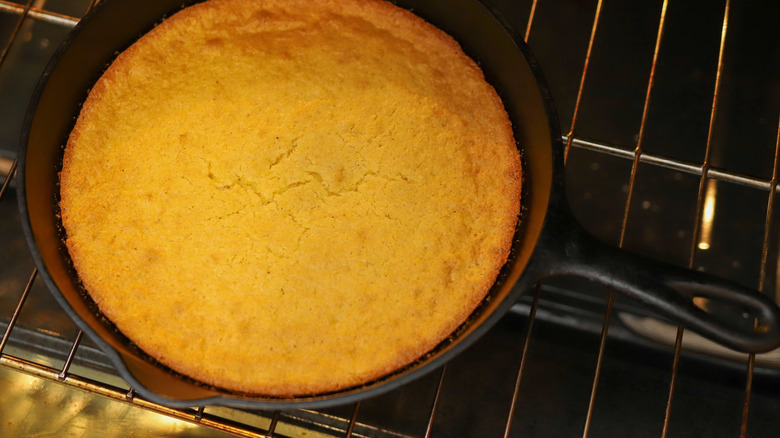The Telltale Sign Your Oven Needs To Be Recalibrated
You've probably been there before: One of your favorite dishes is bubbling away in the oven — the timer goes off, you pull it out, and for some reason, it hasn't even browned on top. Or maybe you moved into a new house or gotten new appliances, and every time you bake, something turns out burned. Before you start to question your cooking skills or your baking prowess, you probably need to recalibrate. A consistent, accurate oven temperature is crucial for every home cook and baker; if the oven temperature is off by even a small amount, the results become unpredictable.
Luckily, the sign that your oven needs to be recalibrated is easy to spot with just a simple test using an oven thermometer. You'll want to make sure that one of your racks is set in the middle of the oven, then place your thermometer in the middle of that rack. Close the oven door, and set the temperature to 350 degrees Fahrenheit. As you wait for the oven to get up to temperature, make sure you keep that door closed (otherwise you'll likely get an erroneous reading). Let the oven run at 350 degrees Fahrenheit for about 30 minutes, then take a look at the thermometer — if it's 15 degrees or more off in either direction, your oven needs to be recalibrated.
Now that you know it's off, how do you fix it?
It's essential to periodically check your oven's temperature, and if you get that dreaded reading of more than 15 degrees higher or lower than what it's supposed to be, then it's time to recalibrate it. Not all ovens can be recalibrated the same way, but some will have a pretty easy fix if the temperature isn't too far off. If you have an electric oven with analog controls (meaning knobs that you turn), then you'll take the temperature knob off and find the screws on its under-side. Use a screwdriver to turn the screws clockwise if the oven was running too hot, and counterclockwise if the oven was running too cold — only turn very slightly, then test it again.
If your electric oven has only digital controls or if your gas oven has digital controls, you're going to need to dig through your junk drawer for the user manual. It will walk you through the calibration process and how to save those settings — once you do that, of course, you'll need to test again. Gas ovens with analog controls will need help from a technician with oven expertise.
Work with your oven, even without a perfect fix
Beyond just learning how to calibrate and recognizing when the appliance is starting to get off temperature, it's useful to spend some time getting to know your oven — because not all appliance problems will have a simple solution of turning screws. If the temperature problem wasn't fixed when you tried to recalibrate, you can adjust the temperature you set the oven to account for the difference in the actual reading. If your cookie recipe says 350 degrees Fahrenheit, but you know your oven isn't precise from the test you did, try setting the temperature higher or lower to compensate for how many degrees off it was during the test. Then bake a batch and adjust the temperature as needed.
If it seems your oven is hotter in one area and cooler in another, you can run tests with an easy, consistent recipe. One common solution is to bake some cornbread to see if your oven is working correctly. Cornbread from a packaged mix is hard to get wrong, and if you follow the directions every time, the final product should be consistent. So try baking batches in different spots in your oven and looking for inconsistencies in color or in the time it takes to bake through. The differences in the bake can help pinpoint your oven's problem areas. You can work around them (like turning pans or baking on certain racks) while you look for a more permanent fix.


